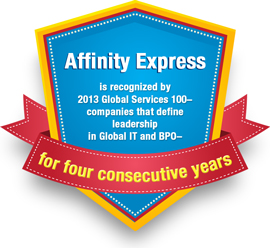Channels of Communication for SMBs to Engage Customers
August 29, 2012 8 Comments
A common ability that many successful businesses share is strong communication. Communication empowers individuals, motivates teams, aligns strategy, sets standards, sells potential consumers and retains existing customers. As more and more companies work on their online presence, they sometimes fail to evolve their communication style so it works in new channels. To effectively reach your audience today, you need to build value for your followers, share content from other sources and get involved in conversations. At the same time, you can’t forget the reason you’re there—to sell.
Here are the vehicles for small- to medium-sized business that will help build your brand online and keep your customers coming back for more!
Website
While building your website, small things can improve your visitors’ experiences. Think of the homepage as your shop’s show window. This is where most of your visitors come in and decide whether to explore further. Instead of confusing them, simple designs help customers navigate while highlighting your products/services, testimonials and samples. Informative and informal copy keeps interest levels high by talking in customers’ language. When you legitimately use keywords searched by target customers on your pages and in the tags, you improve your ranking in search engines results. You should also make the Contact Us tab easy to locate so customers can reach you. Read more of this post

 Writing marketing content isn’t as simple as putting your thoughts on paper. Even after you’ve figured out what your audience wants and what you should talk about, you need to figure out what your voice should be like.
Writing marketing content isn’t as simple as putting your thoughts on paper. Even after you’ve figured out what your audience wants and what you should talk about, you need to figure out what your voice should be like.
 They’ll tell you, you can’t afford to think about branding if you’re a
They’ll tell you, you can’t afford to think about branding if you’re a 

 As several commenters
As several commenters  I’ve
I’ve  I used to be a proud self-professed perfectionist. I’d spend days over one campaign email: researching, testing, editing, trying to get it just right. Then I got this job. (Kidding.) (Umm, not really.)
I used to be a proud self-professed perfectionist. I’d spend days over one campaign email: researching, testing, editing, trying to get it just right. Then I got this job. (Kidding.) (Umm, not really.) Another consequence of being a company with
Another consequence of being a company with  It’s great to have a team reporting to you that is like one big family all working toward a common goal . . . but easier said than done, especially in this global economy. In fact, it’s been more than a decade since I was able to sit in the same room with my direct reports every day. Most recently, I’ve managed a department in upstate New York from Atlanta, one in New York City from Atlanta and, now, one in
It’s great to have a team reporting to you that is like one big family all working toward a common goal . . . but easier said than done, especially in this global economy. In fact, it’s been more than a decade since I was able to sit in the same room with my direct reports every day. Most recently, I’ve managed a department in upstate New York from Atlanta, one in New York City from Atlanta and, now, one in  This last post covers just four basic tips you can use to prevent an email you sent from coming back and hitting you with embarrassment.
This last post covers just four basic tips you can use to prevent an email you sent from coming back and hitting you with embarrassment.
 (The first post of this series is here.)
(The first post of this series is here.) My last post on business communication was well-received,
My last post on business communication was well-received, We started this blog back in May somewhat tentatively, wondering what we would ever write about. Turns out we are much more voluble than we thought: this is the 100th post on the blog!
We started this blog back in May somewhat tentatively, wondering what we would ever write about. Turns out we are much more voluble than we thought: this is the 100th post on the blog! Salespeople. We all know several.
Salespeople. We all know several. I have been marketing to U.S. customers for the last few years. Nothing unusual in that, except that I live in India. And for the most part, my bosses and many of the other people I work with have been based in the U.S.
I have been marketing to U.S. customers for the last few years. Nothing unusual in that, except that I live in India. And for the most part, my bosses and many of the other people I work with have been based in the U.S.